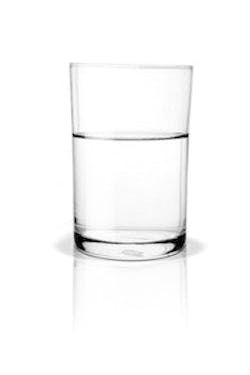Cal Water Installs Hexavalent Chromium Treatment System
Source Envirogen Technologies Inc.
Envirogen Technologies Inc. has started up a high-efficiency ion exchange system for the treatment of hexavalent chromium in drinking water supplies for California Water Service (Cal Water) in Salinas, Calf.
This is the first permitted full-scale system to go online for treating hexavalent chromium since California's Division of Drinking Water (DDW) released a new maximum contaminant level (MCL) of 10 µg/L in July of 2014. The ion exchange system will treat groundwater sourced from a well in the Cal Water system to be more than 20% lower than the MCL.
This system was designed, manufactured, installed and started up in less than 90 days from project go-ahead. A second ion exchange system is planned to come online for Cal Water this summer. These systems represent the eighth and ninth ion exchange systems provided by Envirogen and in operation for Cal Water to treat drinking water, with the previous systems treating nitrate and perchlorate. Envirogen will also operate these systems for Cal Water on an ongoing basis.
According to Dr. Todd Webster, west regional vice president for Envirogen, California Water Service's desire to proactively address hexavalent chromium and the strong working relationship between the two companies helped the development of an optimal solution and its rapid implementation. Prior to selecting Envirogen, Cal Water did an exhaustive review, including pilot testing, of treatment technologies.
Envirogen Technologies has provided ion exchange technology in drinking water applications for more than a decade. Cal Water, the ion exchange system features a multi-vessel bed design that operates in a staggered configuration, blending the water from each vessel and producing a consistent treated water quality. Depending on the flow range, between eight to thirteen vessels are online at any time, with three vessels in regeneration or standby. These systems utilize a patented, counter-current, cascading bed regeneration process to minimize waste, resulting in one bed volume of waste per regeneration cycle and allowing waste rates as low as 0.01%.
The largest component of the operating cost associated with most ion exchange systems is waste handling. For hexavalent chromium treatment, the ion exchange waste brine may be a federal hazardous waste (i.e. Cr > 5 mg/L) that is expensive to dispose of directly. Envirogen's solution for Cal Water is a Brine Processing Unit (BPU) that converts hexavalent chromium to a less hazardous, trivalent chromium that is then precipated using an NSF-61 approved coagulant. The result is a non-hazardous liquid brine waste and a small volume of 2% solid waste. The process units—ion exchange and BPU—were containerized for rapid deployment at the Cal Water wellhead, allowing a small facility footprint.
Source: Envirogen Technologies Inc.
